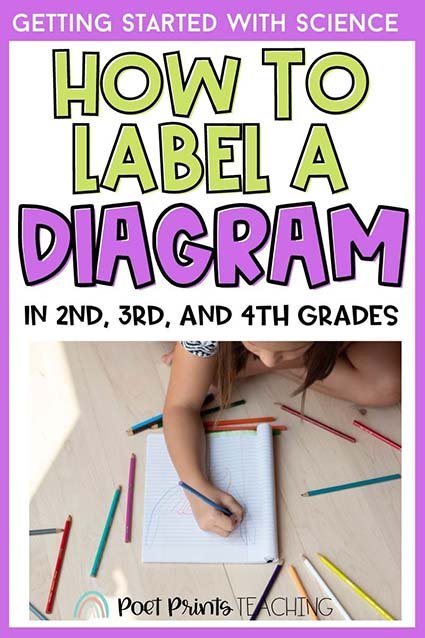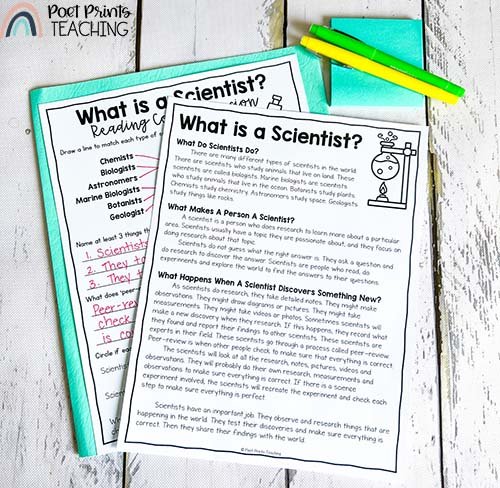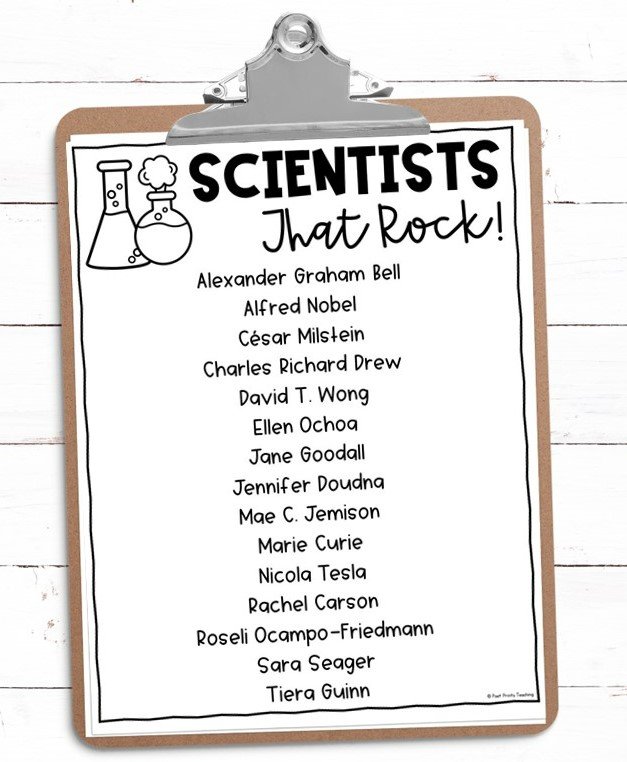Third grade science is SO much fun. The experiments, the hands-on activities… the LEARNING! Setting students up for success is so important in science. Students will have the skills necessary to make hands-on science SO successful with a few targeted lessons. These back to school science lessons are key for the beginning of Third Grade.
What is a Scientist?
This is one of the first science questions we should be asking our students at the beginning of the year. A scientist is a person who conducts research to further knowledge in a particular area. I sometimes get the sense that our students might think scientists are people who only blow things up and only do science experiments.
So we teach them the importance of research when it comes to doing science. It’s not all “fun and games”(ie. Explosions and experiments). There is a research and observation component as well.
I also like to touch on the idea of peer-review when it comes to scientific research. Peer review is the process that scientific discoveries and research go through. Other scientists check or recreate the experiments or research to see if they can verify the discoveries. I like teaching this aspect because it gives students a better idea of the entire research process.
In this post, I break down some of the most engaging ways to introduce students to the scientists behind the most important discoveries in the world. Plus, it has a FREE ‘Science Trading Card’ activity that’s just so much fun.
How to Label a Diagram
Diagrams are so helpful for illustrating things in science. And there are a few key components of a scientific diagram, such as a title, labels, and label lines. There are ways to do each of these things in order to meet the specifications of a scientific diagram.
Diagram labeling will involve both quantitative and qualitative observations, so we will also have to teach students to distinguish between these two types of observations.
Explicitly teaching our students how to make observations and create a scientific diagram will set them up for success, both in third-grade science and upper-level science. Just think about how impressed their high school science teachers will be!
How to Successfully Complete a STEM Challenge
STEM Challenges are so fun to do in third grade and are a great way to challenge students to use their creative and critical thinking to solve problems! But, we can’t expect them to know exactly what to do without some explicit teaching. So at the beginning of third grade, I always teach students how to successfully complete a STEM challenge.
I’ve outlined my process for teaching STEM Challenges here, and you can also read about my 4 favorite STEM activities that use few or inexpensive supplies.
Teaching the Scientific Method
Science experiments are such an important part of any science class, and any experiment or STEM challenge is rooted in the scientific method. It is so important that students understand the steps in the scientific method so that they are ready to conduct scientific inquiries in and out of the classroom.
Taking time to teach terminology like hypothesis, procedure, results, conclusion, etc. will give students the vocabulary they need in any science classroom.
Science has the ability to create wonder and excitement in the classroom. So let’s set our students up for success by teaching these introductory science lessons before delving into the curricular topics.


















